Essential Travel Gear for Italy and Greece
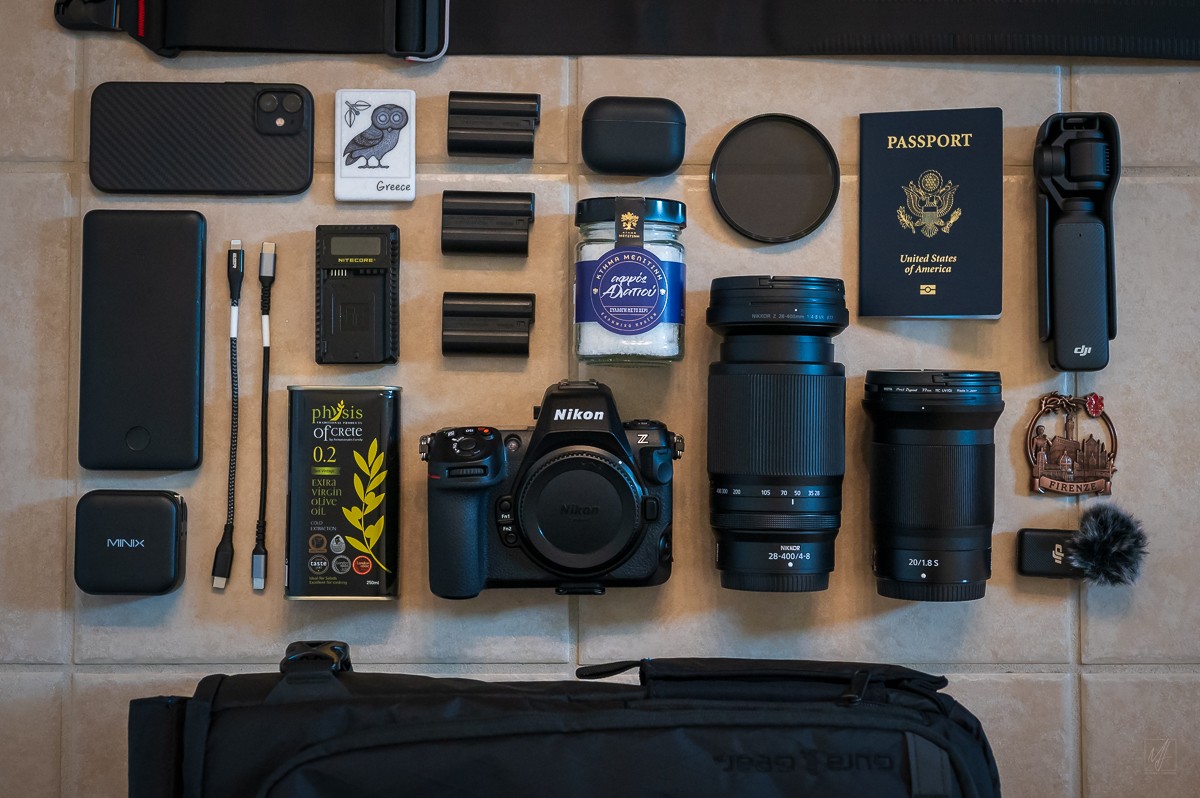
My last international trip to Israel was in April 2022. I noted then that because of the pandemic that it had been two-and-a-half years since my previous international trip to Brazil. Somehow it’s been another two-and-a-half years between Israel and the Italy and Greece trip. That’s a lot of time in the camera world – and no surprise that means a lot of changes to the gear I used on this trip.
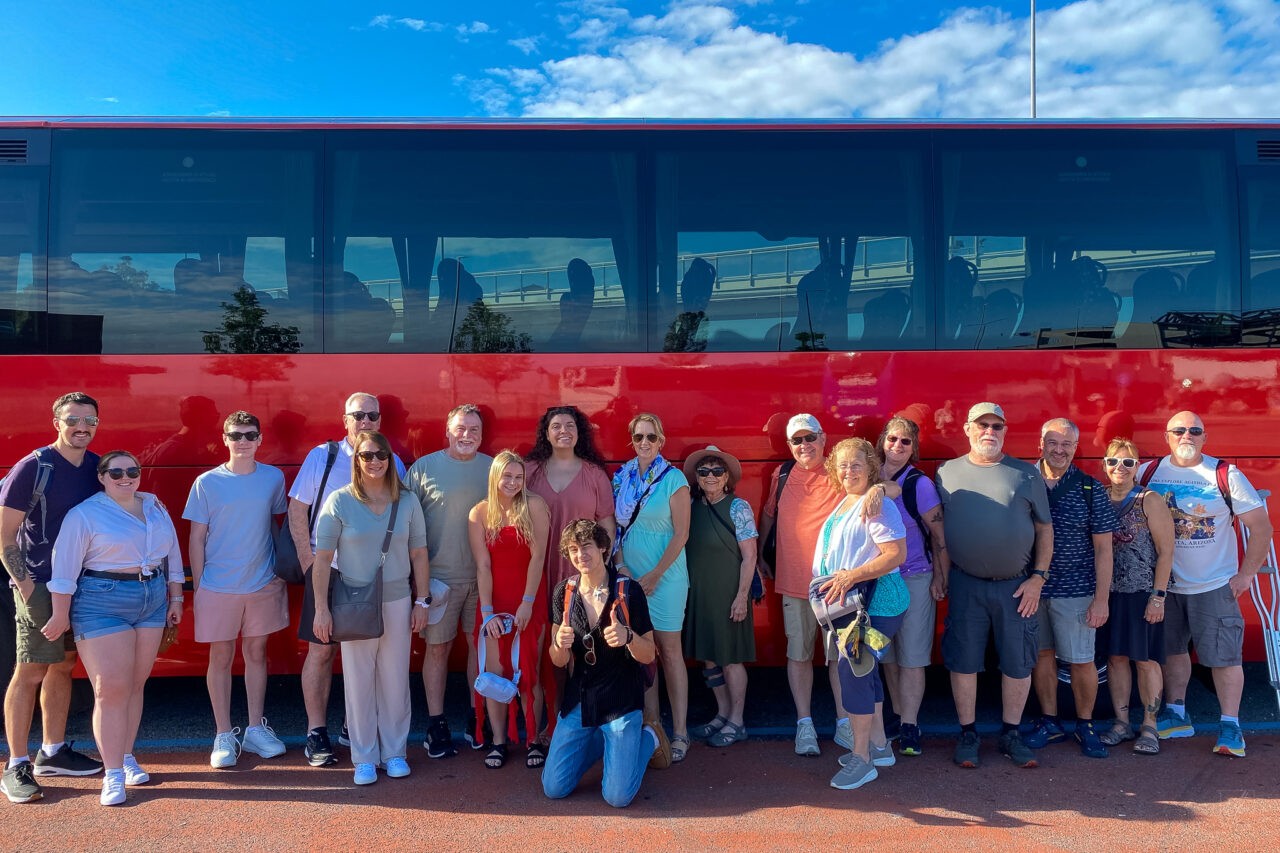
Somewhere near Venice, Italy
iPhone 11 back dual wide camera 4.25mm f/1.8 • ISO 32 • 1/450 sec at f/1.8
Travel Gear and Workflow
So here is the Italy and Greece gear and workflow update. Every trip requires a carefully considered pack list that balances the demands of international shooting locations with the willingness (and ability!) to carry a certain amount of equipment. At three weeks this would my longest international trip by about a week. I spent a lot of time before the trip considering what to bring, how to carry it, and what I needed to do to ensure I came back from the trip with the photos and video I planned for.
As I did for Israel, Brazil, Southeast Asia, India, Cuba, Peru, South Africa, and Galapagos, here is an overview of the gear I carried to Italy and Greece followed by the photo and video workflows I used to handle the media files when I returned.
Travel Gear
Nikon Z8 45.7MP Mirrorless Camera: My DSLR journey started in 2003 with the Nikon D100, then progressed to the Nikon D7000 (used for the Greece and Turkey trip), followed by the Nikon D600 (for the Galápagos Islands trip), then to the Nikon D750 – my travel workhorse since 2015 and with me in Brazil, Southeast Asia, India, Cuba, Peru, and South Africa. But I finally made the shift to Mirrorless with the Nikon Z6 (which never travelled) and then the Nikon Z6ii (used for the Israel trip). With each of these cameras I’ve relied on the RAW image file format to achieve the best image quality. Twenty years ago RAW files were flat, low contrast, and low color. But RAW files possess greater dynamic range compared to their JPEG counterparts, allowing for more post-processing flexibility for photographers. With each generation of digital camera the quality of RAW image files directly out of the camera improves greatly. Some of this is attributable to improvements in sensor technology, and some is due to improvements the internal processing of RAW files by camera manufacturers. I always thought the D750 RAW files were excellent, but everytime I download RAW files from the Z6, the Z6ii, and now the Z8, I am blown away. They look incredible! I spend significantly less time post-processing photos from the Z6ii and the Z8. Switching to Mirrorless didn’t result in the weight savings I had initially expected for travel purposes. While the Z6ii weighed slightly less than the D750 – about 125 grams, the Z8 weighs 80 grams more than the D750 and 205 grams more than the Z6ii. After carrying the Z8 through Italy and Greece for 3 weeks I can confidently say the Z8 is a great travel camera! And paired with the 28-400mm the image quality for stills and video is outstanding, even if it’s a bit heavier!
In Nikon’s camera lineup I’ve always owned one of the “prosumer” models and not one of the “professional” or “flagship” cameras. Seemed right for my capabilities and budget. But over the years as my photographic skills have improved I’ve become more interested in stepping up in the lineup. When the Z9 was released I knew it wasn’t for me. Too big and too heavy. In the Spring of 2023 when the Nikon Z8 was announced I took notice. Most of the capabilities of the Z9 in a smaller and lighter form factor. I made the leap in the summer of 2023 and the Z8 is easily the best camera I have ever owned!

iPhone 16 back camera 5.96mm f/1.6 • ISO 400 • 1/60 sec at f/1.6
NIKKOR Z 28-400mm f/4-8 VR Travel Zoom: After carrying the 28-300mm for many trips I finally switched to the 24-200mm for the Israel trip. Compared to the 28-300mm I was looking forward to working with a slightly wider lens for travel, but I was concerned that the limited reach of the 24-200mm might be a problem. Several months before the Italy and Greece trip Nikon announced the 28-400mm f/4-8 super telephoto lens. I immediately placed an order. There is no question that super zooms are compromise lenses, but this lens is superb for travel. When traveling a lot of photos are in strong daylight, so working with f/8 on the telephoto end isn’t much of a compromise. I really enjoy traveling with this lens. Great image quality and range from a single lens in a size that’s easy to carry on planes, ferries, funiculars, ships, buses, and just walking down the street.
NIKKOR Z 20mm f/1.8 Wide Angle Prime: For some variety I also brought along the 20mm, planning to use it in dark church interiors. But we weren’t inside many churches. But in Florence I didn’t realize how close the Duomo is to nearby buildings. There wasn’t a lot of room to step back for a wide shot of the church. Having the wide angle helped for this view …
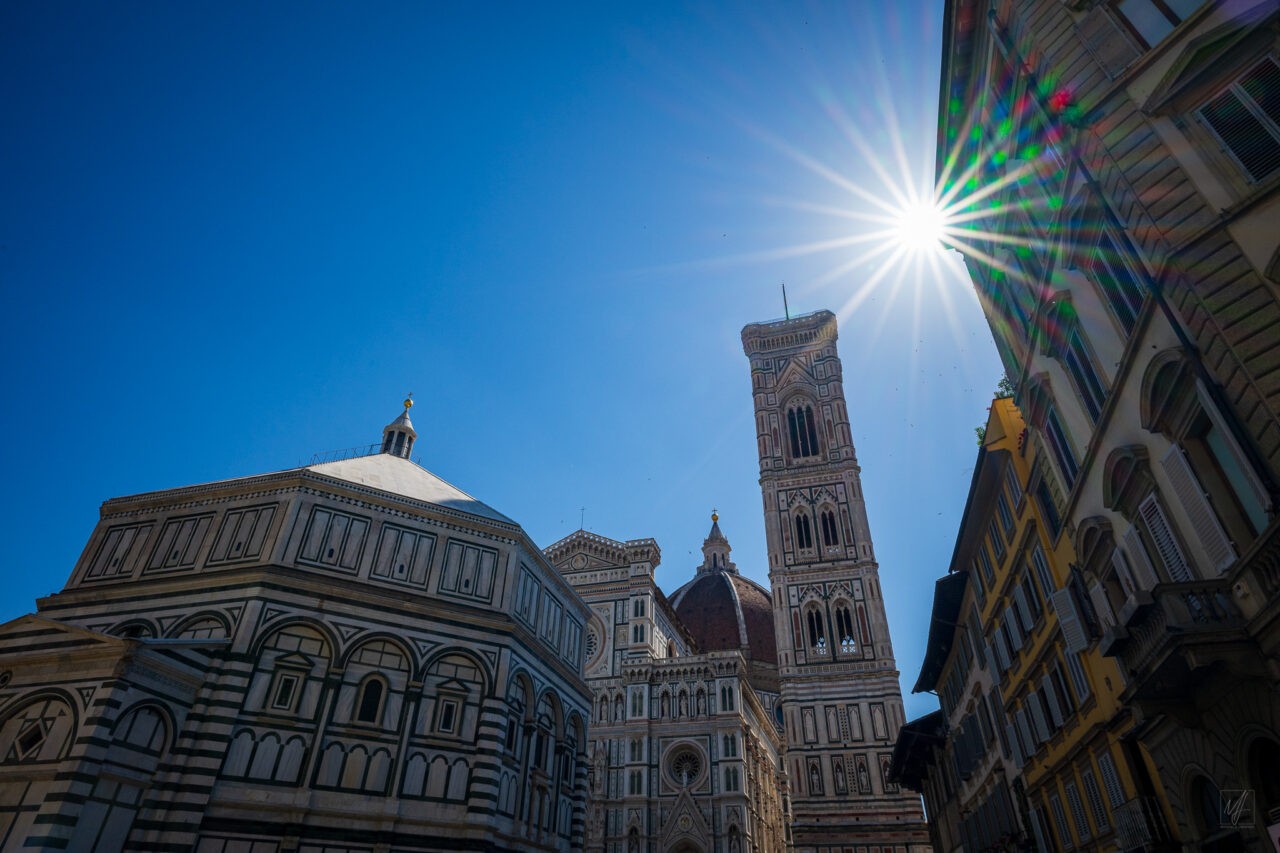
Firenze, Italy • 43°46’22.30″ N 11°15’16.49″ E
Nikon Z8 • NIKKOR Z 20mm f/1.8 S • ISO 360 • 1/500 sec at f/16
DJI Osmo Pocket 3: I previously carried the original OSMO Pocket but upgraded to the newest iteration in the fall of 2023. This gimbal/stabilizer provides a great platform for silky smooth video, timelapse, and motionlapse sequences. The tiny size of the Osmo Pocket 3 can’t be beat for travel. It’s great for crowded street scenes, shooting from a vehicle while rolling down a bumpy highway, and getting a different video perspective than a DLSR provides. I carried the Osmo Pocket 3 as my only still and video camera during our day on the island of Capri. I thought we would have some boat-to-boat transfers to enter Capri’s Blue Grotto and that the OSMO Pocket 3 would be easier to handle than the larger camera. As it turned out the wait to get into the Blue Grotto was hours long so we opted for a scenic boat tour around the island. But the stabilized video was great to have as we rolled in the seas around Capri. I had planned to use the OSMO Pocket 3 for daily interstitial timelapse sequences but never found the time or situations to make that work.
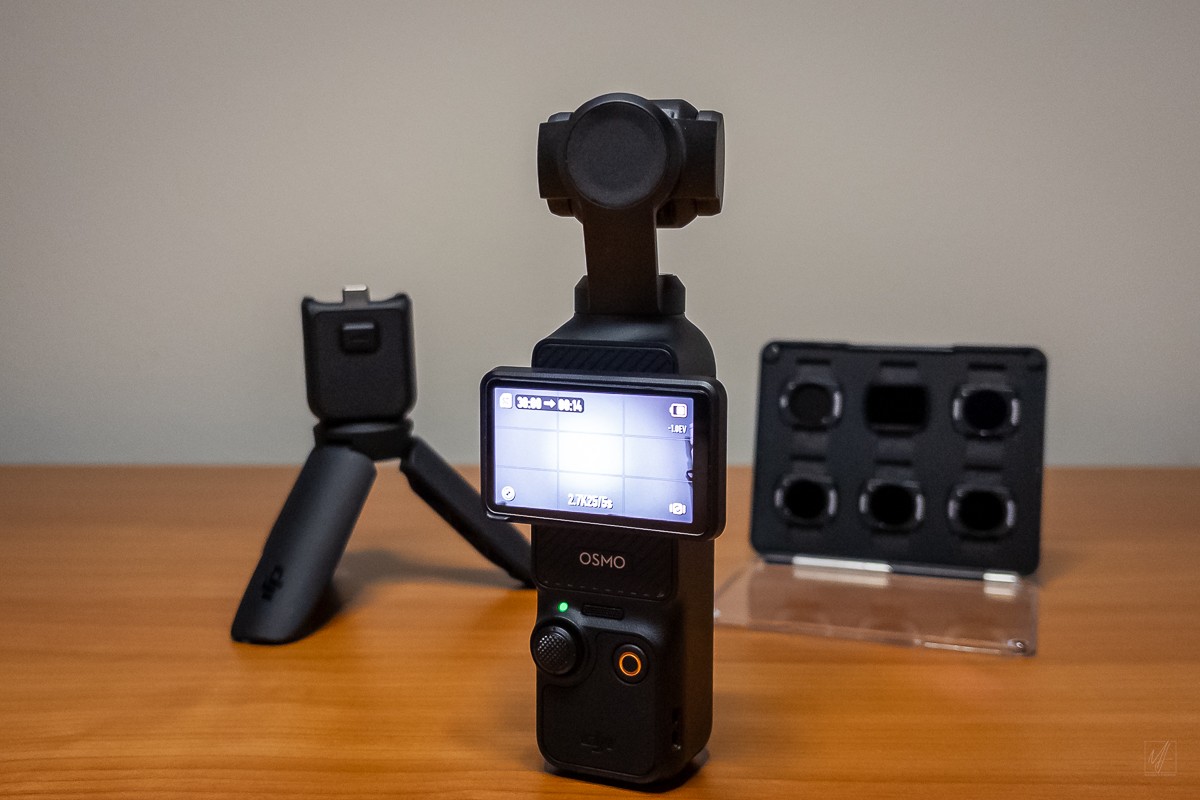
iPhone 16 back camera 5.96mm f/1.6 • ISO 400 • 1/60 sec at f/1.6
Apple iPhone 12 mini: I bought an iPhone 12 mini just before the Israel trip. In addition to emails, texts, and phone calls, I used the iPhone for SnapBridge and WordPress apps to write and post blog updates while on the road, the DJI Mimo app for the DJI Osmo Pocket, and Adobe Express to make Facebook and Instagram art cards for each day’s posts. I really like the smaller size of the mini form factor, but the smaller phones don’t have the battery life of their larger counterparts. Plenty of juice for every day use, but there is a lot of phone use while traveling. And while I previously used an Aokatec AK-G2 GPS Receiver to add location data to photos (originally purchased for the Nikon D600, but modified to work with the Nikon Z6ii), with the Nikon Z8 I connected to the SnapBridge app on the iPhone for GPS data on this trip. Works extremely well, but there is some additional battery drain.
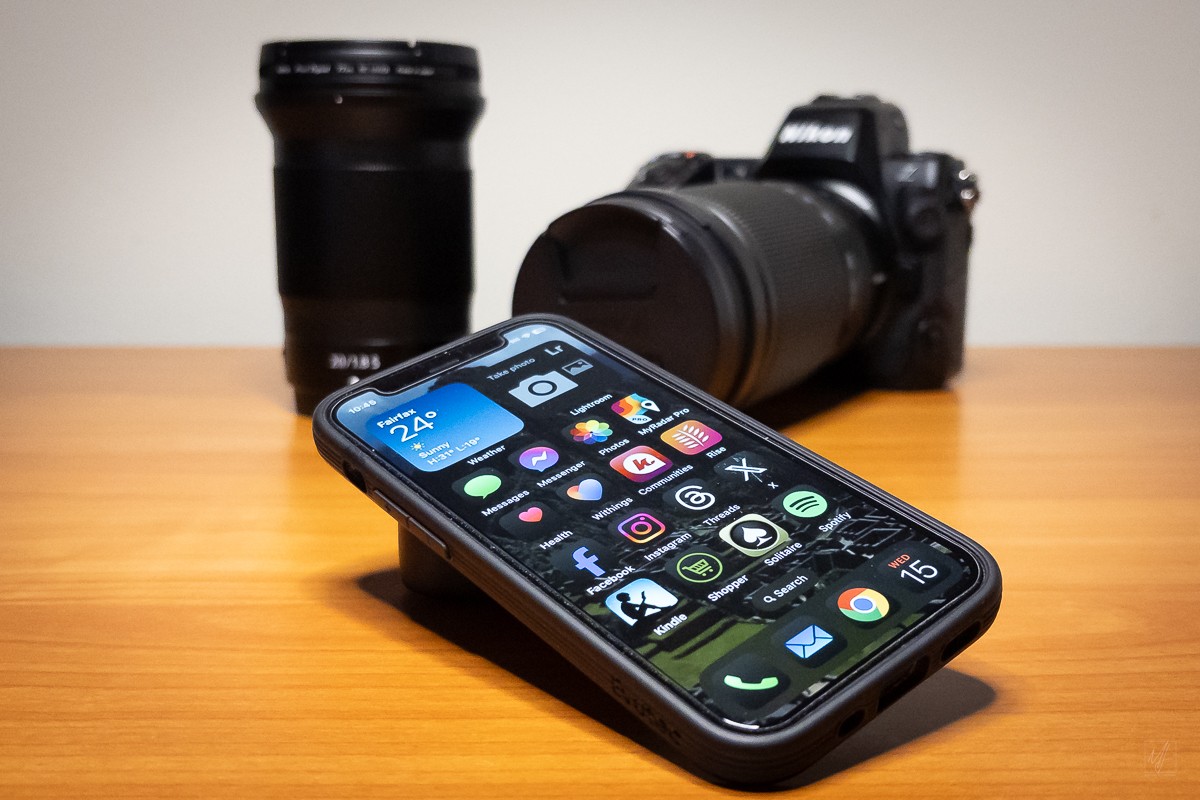
iPhone 16 back camera 5.96mm f/1.6 • ISO 500 • 1/60 sec at f/1.6
GuraGear Kiboko City Commuter 18L+ Roll Top Camera Backpack: After years of traveling with the brilliant Vanguard Kinray Lite 45 backpack it was time to make a change as the Kinray was showing signs of wear. The City Commuter looks beautiful, but the rear camera compartment access and the roll top would take some getting used to. While the bag is good for carrying gear on long-haul flights, it seemed too large as an everyday carry on the bus and while touring. I’ve used the City Commuter on a couple of domestic trips since Italy and Greece, but I’m not sure if it will be with me on my next international trip.
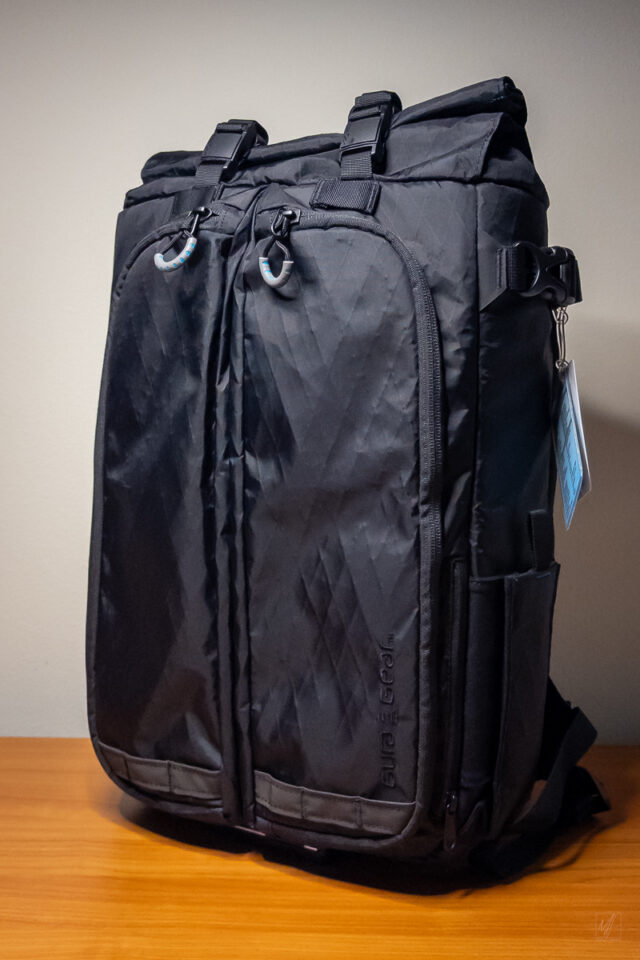
iPhone 16 back camera 5.96mm f/1.6 • ISO 500 • 1/45 sec at f/1.6
Anker 525 PowerCore Essential PD: I bought this power bank with PD capability (Power Delivery USB charging technology) that can directly charge the Nikon Z8. At 20,000 mAh, it has enormous capacity and can fully charge the iPhone, Watch, Air Pods, and Z8 several times. The Anker is larger and heavier than the Ventev Powercell 6010+ I previously carried for travel, but this power bank is a great addition to the traveling kit and other instances when I need portable power.
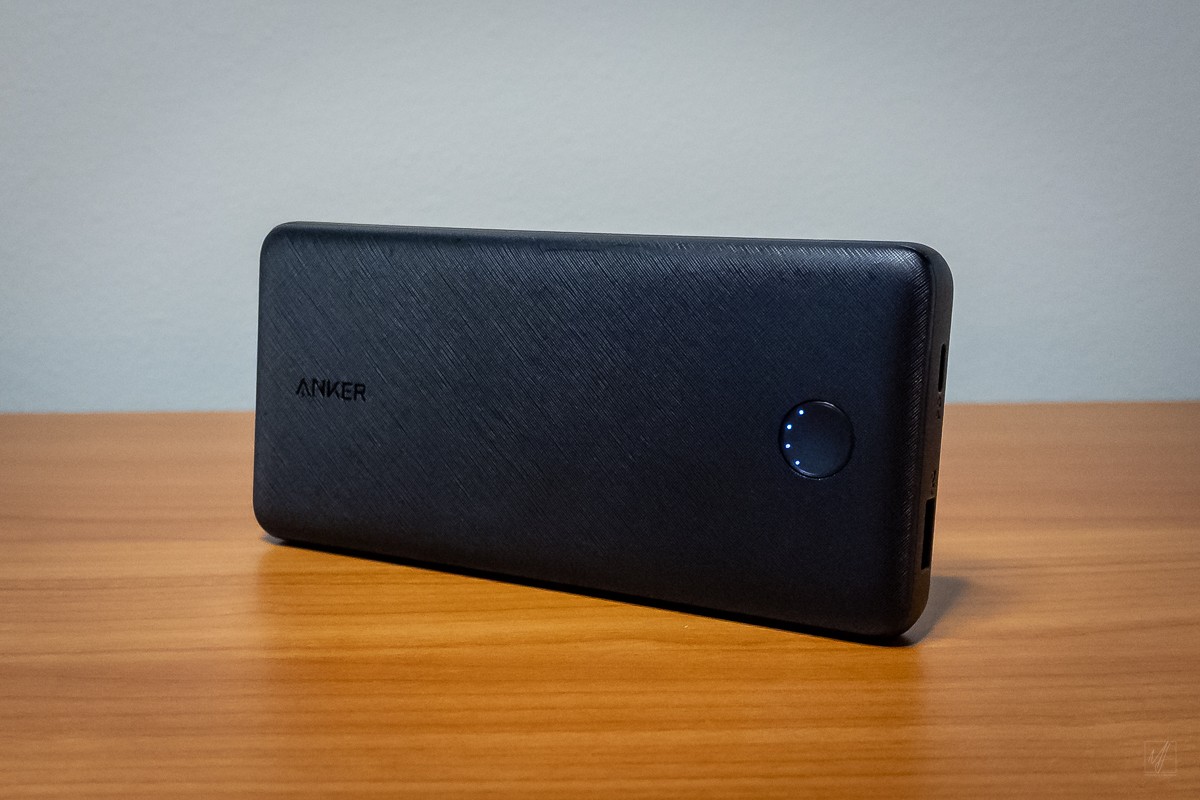
iPhone 16 back camera 5.96mm f/1.6 • ISO 400 • 1/60 sec at f/1.6
MINIX NEO P3 100W GaN Wall Charger: This replaced the RavPower 60W 6 Port USB Charging Hub. Although the MINIX NEO P3 is only a 4 port charger, it does feature a couple of 100w ports, supports PD charging, includes a foldable plug, and supports 100-240V voltage for worldwide use. With a collection of 6-inch USB cables I can easily setup an overnight charging station in a hotel room to quickly charge the Nikon Z8 EN-EL15 batteries with the Nitecore UNK2 Dual Slot USB Charger, the iPhone 12 mini, Apple Watch 8, Apple AirPods Pro 2, the Anker 525 PowerCell, and the DJI OSMO Pocket 3. This charging setup is compact and light for travel, and everything is recharged after a few hours.
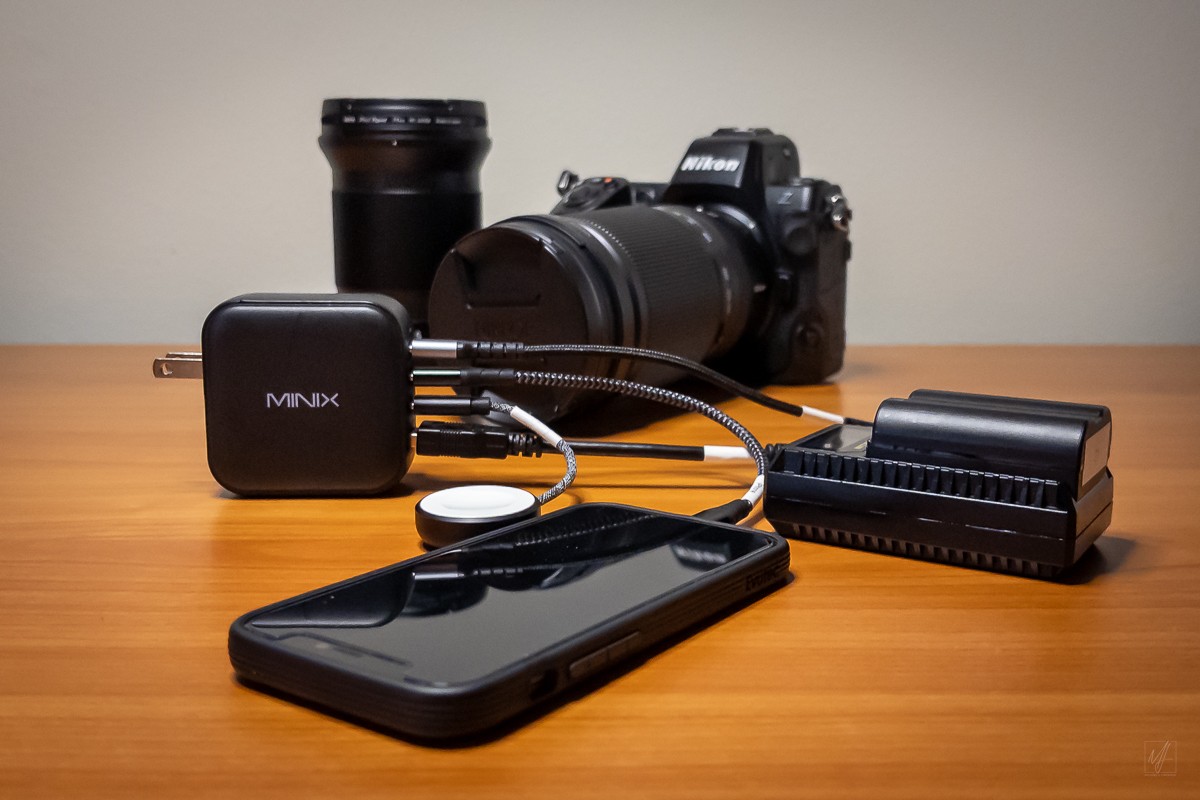
iPhone 16 back camera 5.96mm f/1.6 • ISO 500 • 1/60 sec at f/1.6
DJI Mic Transmitter: After years of bringing the Nikon ME-1 Microphone, but not really using it, I switched to a DJI mic transmitter with a specific purpose in mind. When touring with a group of people there is always a certain amount of ambient sound from among members of the group. When editing I’m always looking for audio with clean ambient sound … free of any commentary or camera shutter sounds. So I brought the tiny DJI Mic transmitter and at each site we visited I stepped away from the group to record 30 seconds of clean audio.
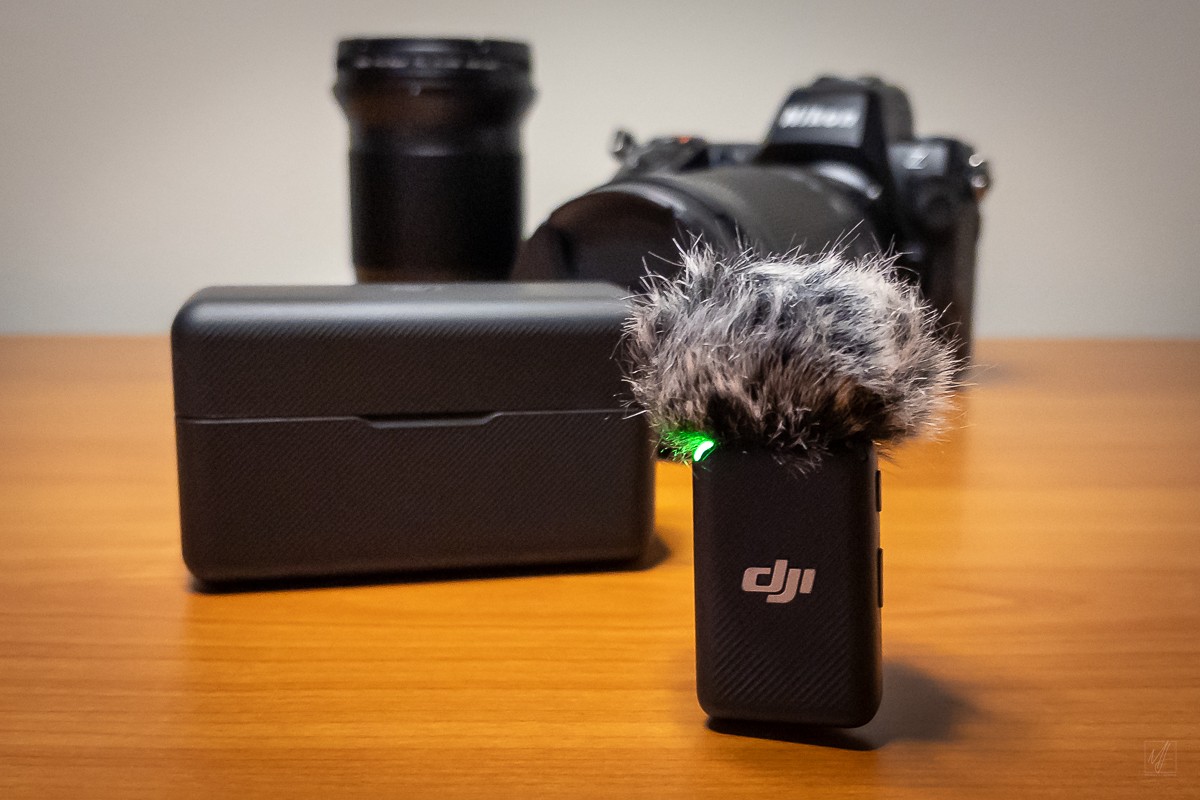
iPhone 16 back camera 5.96mm f/1.6 • ISO 500 • 1/60 sec at f/1.6
Memory Card and File Management
For this trip I brought two SanDisk 128GB Extreme PRO CFexpress cards and two Delkin Devices 128GB Black UHS-II SDXC cards.

iPhone 16 back camera 5.96mm f/1.6 • ISO 500 • 1/45 sec at f/1.6
Each 128GB CFexpress card holds about 1,400 14-bit NEF files. I setup the Nikon Z8 with a 128GB CFexpress card in slot 1 to store the NEF raw photo files with a 128GB SDXC card in slot 2 as the destination for 4k 24fps H.265 10-bit MOV files. About halfway through the trip, as is my usual practice, I swapped out the initial set of memory cards for the second set. Before traveling on this trip I developed a series of shooting rules or guidelines based on my previous experience working with media after trips. Here are the guidelines and how I did …
- Record 30 seconds ambience at each site using the DJI Mic Transmitter … I did this, although I didn’t do much testing prior to traveling and recorded the audio at a low level. Still, I’ve got something to work with in post.
- Capture all photos and video with Nikon Z8 … I did not do this. I thought it would be helpful to work with media from a single source after the trip. While the OSMO Pocket 3 captures great stills it doesn’t record GPS positioning or account for time zone changes. But in Capri it seemed the better choice as the camera for the day. And sometimes the best camera is the one you have easiest access to, so inevitably there are iPhone photos.
- Capture interstitial timelapses with the DJI OSMO Pocket 3 … I did not do this. Simply not enough time. A good timelapse requires 15-30 minutes in one place and rarely were we stationary in one location for that amount of time.
- No iPhone photos or video … I did not do this. See second bullet above.
At the end of the trip, between the Z8, the DJI OSMO Pocket 3. and the iPhone 12 mini, I ended up with 1852 picture files totaling 78.85GB. That’s a shooting rate of about 97.5 per day – right on my average of about 100 photos per day on international trips.
| Photo | Files | Gigabytes |
|---|---|---|
| Nikon Z8 NEF | 1711 | 77.37 |
| DJI Osmo Pocket 3 DNG | 73 | 1.28 |
| iPhone 12 mini DNG | 68 | 0.20 |
| TOTAL | 1852 | 78.85 |
Between the Z8, the DJI Osmo Pocket 3, the iPhone 12 mini, and the DJI Mic transmitter I ended up with 802 movie and audio files totaling 140.61GB with a running time of about 2 hours and 28 minutes.
| Video | Files | Gigabytes |
|---|---|---|
| Nikon Z8 MOV | 634 | 123.26 |
| DJI Osmo Pocket 3 MP4 | 115 | 16.78 |
| iPhone 12 mini MOV | 6 | 0.40 |
| DJI Mic Transmitter WAV | 47 | 0.17 |
| TOTAL | 802 | 140.61 |
Fitness Data
While I’m sharing media data captured during the trip, inspired by Michelle’s post-trip by-the-numbers post, I thought I would also share some of the fitness data captured by the Apple Watch as we made our way through Italy and Greece. Across the 20 days of travel there were 238,934 steps, 106.4 miles, and 266 flights of stairs!
| Steps | Miles | Stairs | |
|---|---|---|---|
| IAD to BOS to LHR | 15,846 | 7.2 | 3 |
| LHR to LIN to Venice | 5,721 | 2.5 | 3 |
| Venice | 11.987 | 5.3 | 10 |
| Verona | 17,888 | 8.1 | 7 |
| Florence | 18,205 | 8.3 | 5 |
| Orvieto and Rome | 12,318 | 5.6 | 23 |
| Vatican City and Rome | 15,406 | 6.8 | 15 |
| Capri | 7,412 | 3.2 | 20 |
| Pompeii | 8,303 | 3.6 | 8 |
| Olympia and Tolo | 8,068 | 3.5 | 6 |
| Peloponnese | 9,763 | 4.3 | 19 |
| The Acropolis | 13,136 | 5.6 | 8 |
| Cape Sounion | 9,036 | 3.9 | 16 |
| Mykonos | 16,168 | 7.3 | 40 |
| Ephesus and Patmos | 9,830 | 4.4 | 20 |
| Rhodes | 21,136 | 9.5 | 16 |
| Crete and Santorini | 12,051 | 5.4 | 23 |
| Athens | 12,288 | 5.4 | 16 |
| ATH to LHR to BOS | 6,753 | 3.0 | 2 |
| BOS to IAD | 7,619 | 3.5 | 6 |
| TOTAL | 238,934 | 106.4 | 266 |
WordPress Blog Updates
For the daily blog updates I use the Z8’s built-in Wi-Fi to connect via the SnapBridge app installed on the iPhone 12 mini. Once connected it’s easy to select pictures to transfer to the phone, and then incorporate those photos in the daily trip blog updates using the Jetpack for WordPress mobile app. Several times a day while traveling, I open SnapBridge, browse through the available pictures on the Z8, and download a couple for use in that day’s post. With Jetpack it’s easy to draft new text, insert photos, make edits, and move paragraphs. Internet access in Italy and Greece was good, with fairly consistent wireless coverage except for the onboard cruise portion of the trip. Between uploading photos, drafting the content, and finding someone to proof – the daily blog updates take about an hour each day to complete … usually on the bus between locations … or maybe at dinner at the end of the day!
Photo Workflow
My standard workflow for photos and video remains the same. I’m working with Adobe Photoshop Lightroom Classic for photo management and editing – using the Creative Cloud Photography plan.
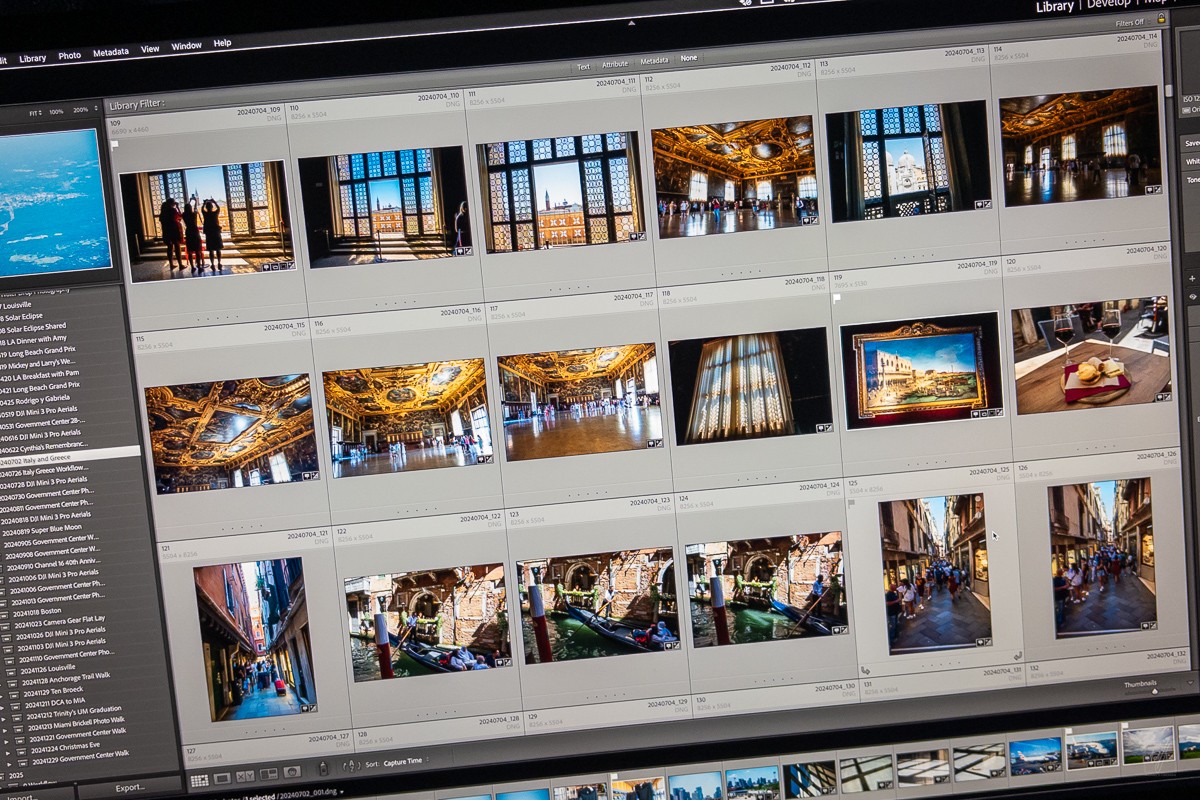
iPhone 16 back camera 5.96mm f/1.6 • ISO 125 • 1/50 sec at f/1.6
Several years ago I dropped keywording as a workflow step and substituted sorting into collections. I find using collections really helps to identify the best images – those I want to focus on for post-processing. The simplified version of the photo workflow is:
- Import as DNG to folders named by date and location
- Delete duplicates and rejects … photos that are out of focus or the inevitable inadvertent photos of the ground
- Geoencode
- Rename by date with sequential numbers
- Collections for Full Shoot, Picks, and Selects
- Post-process
- Caption
- Output using Jeffrey Friedl’s Metadata Wrangler Lightroom Plugin to format captions to include caption text along with city, country, GPS location, camera, lens, and exposure information
- Import to WordPress with Katsushi Kawamori’s Upload Media Exif Date so that uploads to the Media Library are sorted chronologically by date and time captured.
Video Workflow
Video files are digitized using Apple Final Cut Pro to events named by date and location. After import files are renamed by date and time.
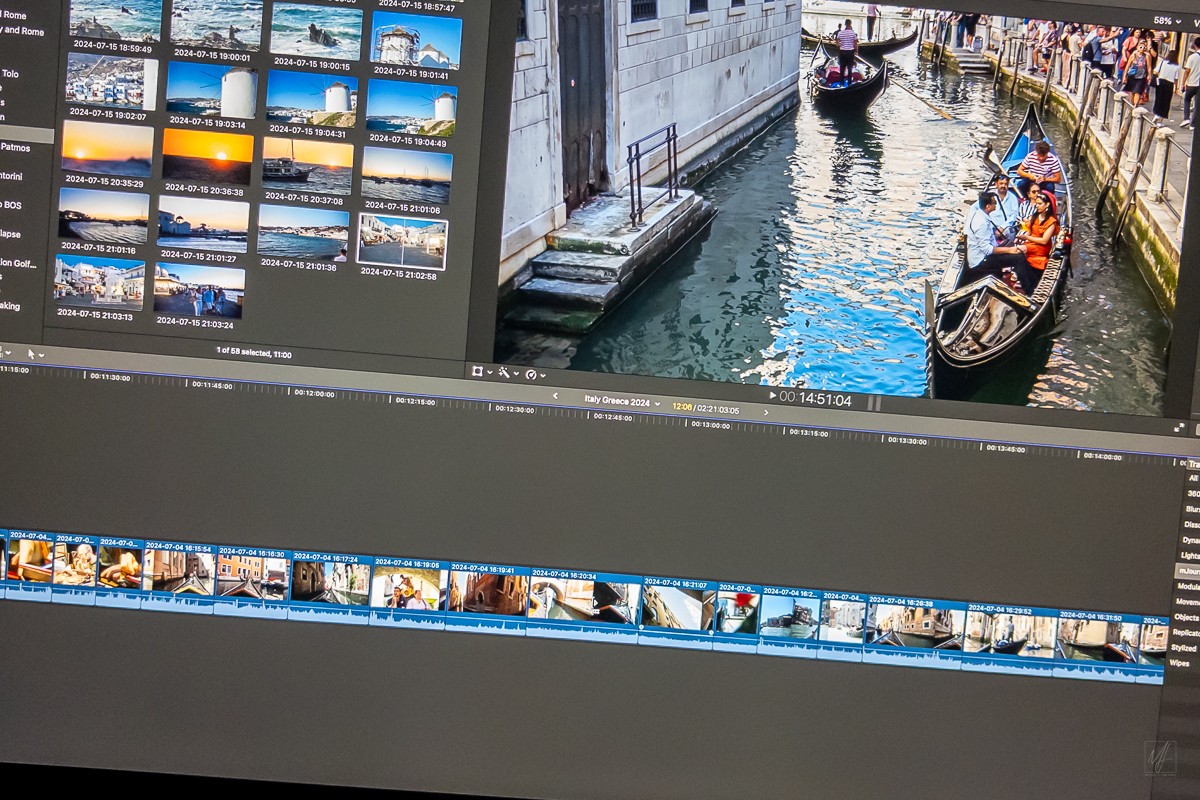
iPhone 16 back camera 5.96mm f/1.6 • ISO 500 • 1/50 sec at f/1.6
With all trip photo and video files transferred I confirm onsite and offsite backups are complete (using CrashPlan for Small Business to manage both backups) and then reformat the CFexpress and SDXC cards for use on the next project and then figure out when I’ll actually edit the video!
 Michael S. Liberman
Michael S. Liberman
What a delightful and informative post! I particularly enjoyed the guidelines (and the honesty). I’m rather surprised you take under 100 photos per day. Internationally, I’m guessing I’m in the 150-200 per day. I will try the tip of taking 30 seconds of ambient sound. I am wondering about setting up a website for my travel logs instead of Fb. Thank you again for taking time to craft the behind the scene photo geek story.
Thanks for reading and for your comments, Mitsi!! I don’t have a target or goal each day to take a set number of pictures. I just take the pictures I feel like I need to capture a given location. And while there are days that are more (Venice, Vatican City, and the Acropolis) and days that are less (transfer days), somehow it always averages out to about 100. But I also spend half of my time shooting video … time that would likely otherwise be spent taking pictures. So that probably works to lower the per day average!